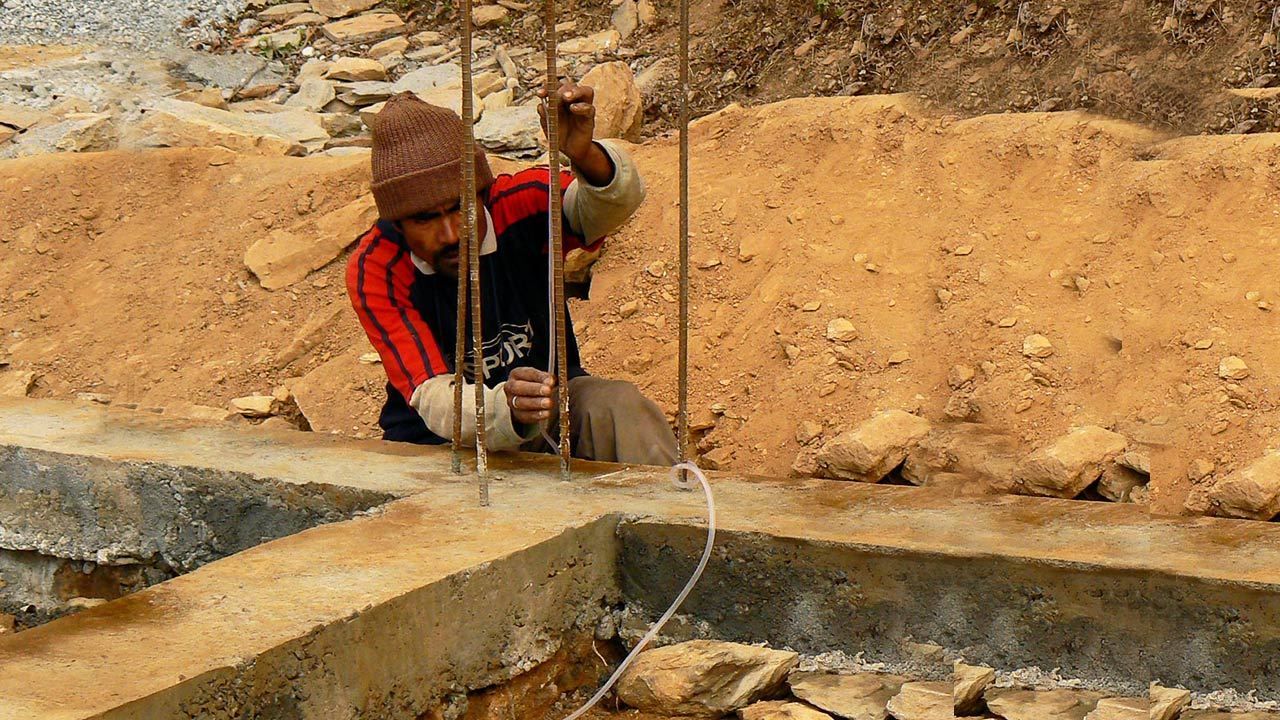Open for students and professionals of Civil, Structural and Earthquake Engineering. Send us an email to request the full assignment sheet via this link.
Smart Shelter Foundation has built two types of schools in Nepal: Heavy thick-walled rubble stone buildings without any vertical steel bars, and thinner-walled classrooms made with hollow cement blocks. These lighter block masonry walls have 3 vertical bars at corners and 4 bars at t-sections, as well as vertical steel next to the doors and windows.
It is generally accepted that we do need these vertical reinforcements in brick and block walls, to strengthen the critical connections and to avoid shear cracks. However when looking at the high volume of books and manuals, we come across dozens of different dimensions, solutions and details. What we need now is a clear answer on the correct number, position, diameters and detailing of vertical reinforcements, for the most used building types.
As it is also generally accepted that horizontal bands are much more effective than vertical reinforcements, another way of thinking is this: Is vertical steel needed at all in the first place? It will be very interesting to put this to the test and to figure out if there are construction types, or seismic hazard levels, where we can remove or reduce these vertical rods.
Recently there is much discussion about the role of vertical steel bars in the critical wall connections of rubble stone construction. We would like to end this ongoing discussion once and for all and clearly say YES or NO to vertical steel bars in rubble stone masonry. More detailed information about this particular research can be found here.
Between 2007 and 2012 Smart Shelter Foundation built 15 earthquake resistant schools in the mountain areas of Kaski District in Nepal. Some of them are built with hollow concrete blocks with cement mortar. A system of horizontal bands at several levels and vertical steel bars at strategic positions improve the overall stability and strength of the buildings. Our schools survived the heavy earthquakes in April of 2015 without any significant damage.
The SSF schools are located only 70 kilometer from the epicenter in Gorkha. But in all fairness we have to say that Kaski District was not too severely hit by the quakes, and the damage is far less than other parts of the country. It means that our schools have not been tested to the fullest. But even so, any assessment would still be based on observation.
This research wants to go more in-depth and aims to determine through lab testing how much seismic force our schools really can endure. Part of this task is to fully assess the combination and collaboration of horizontal bands and vertical steel bars.
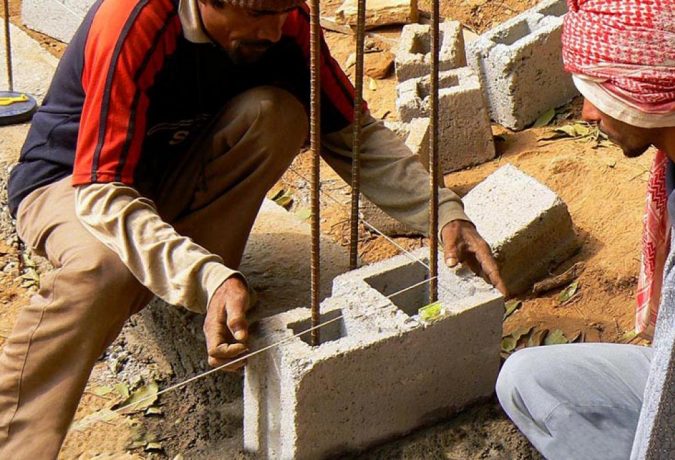 This research aims to optimize all vertical reinforcements in different wall types.
This research aims to optimize all vertical reinforcements in different wall types.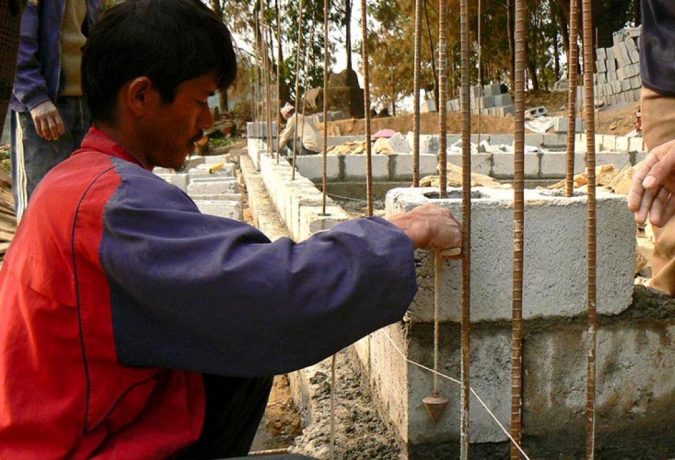 We need to fully understand the role of vertical steel bars in thinner walled construction.
We need to fully understand the role of vertical steel bars in thinner walled construction.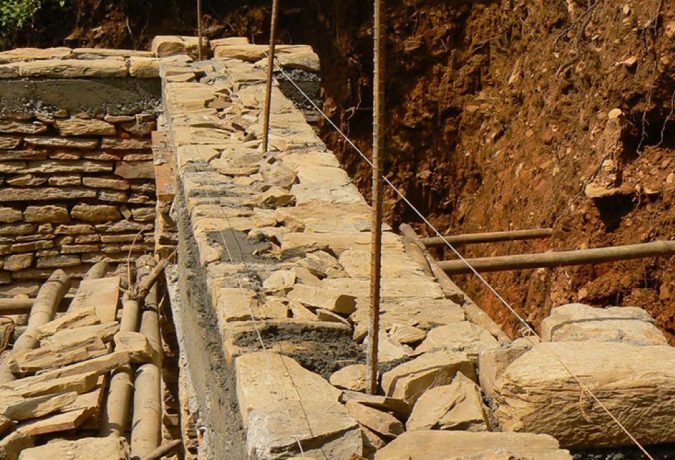 We like to have a clear answer on the need for bars in rubble stone walls; Yes or No?
We like to have a clear answer on the need for bars in rubble stone walls; Yes or No?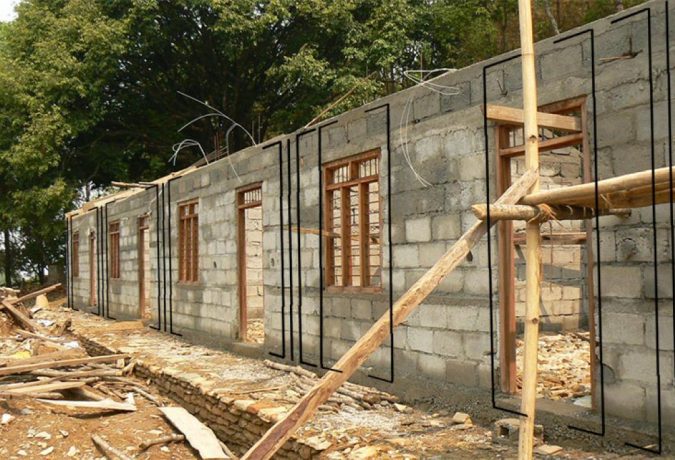 We will need to optimize the number and dimensions of all the vertical reinforcements.
We will need to optimize the number and dimensions of all the vertical reinforcements.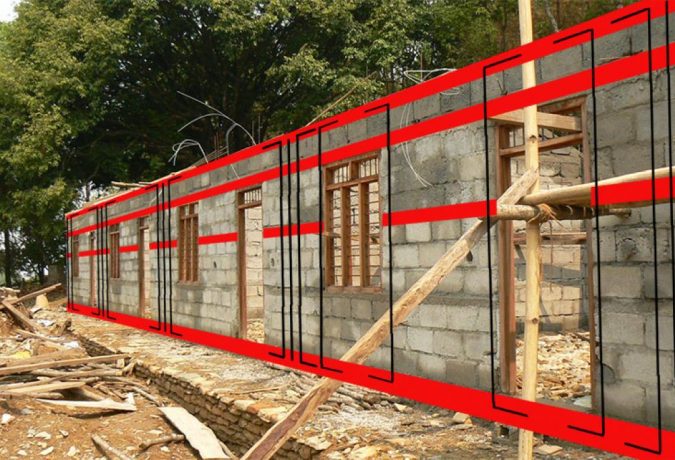 At the same time we must take into account their combined action with the horizontal elements.
At the same time we must take into account their combined action with the horizontal elements.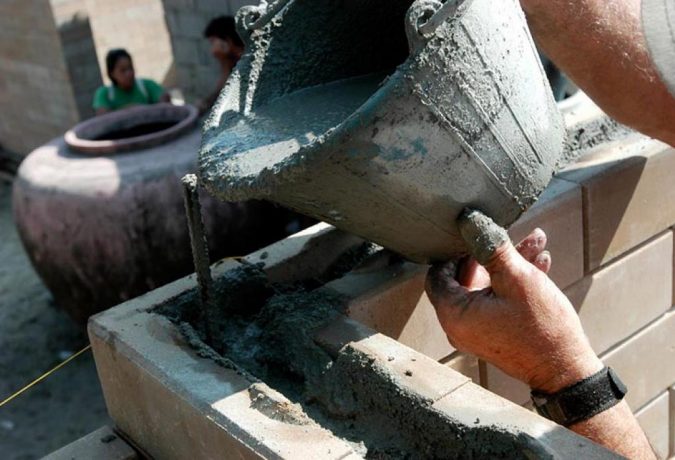 How can we best protect the steel bars against corrosion?
How can we best protect the steel bars against corrosion?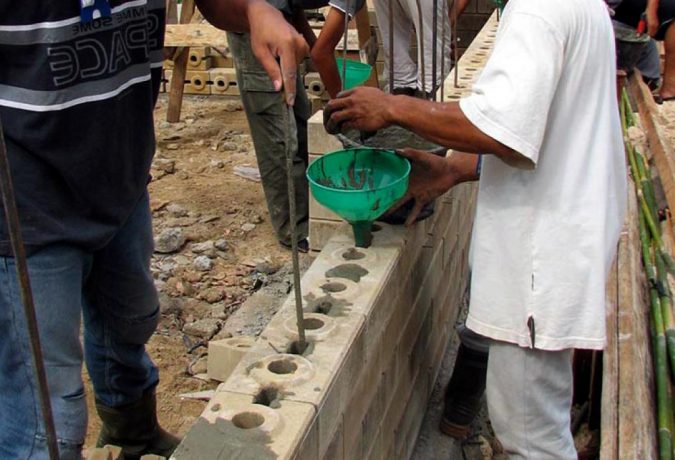 And do we need to grout all holes in hollow blocks and bricks?
And do we need to grout all holes in hollow blocks and bricks?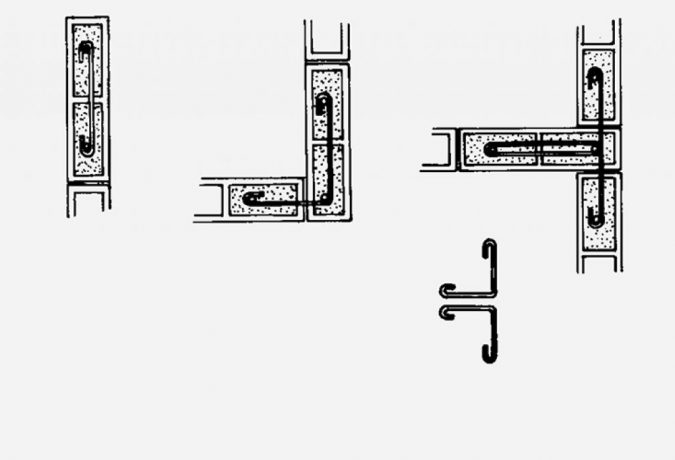 This may include extra horizontal links.
This may include extra horizontal links.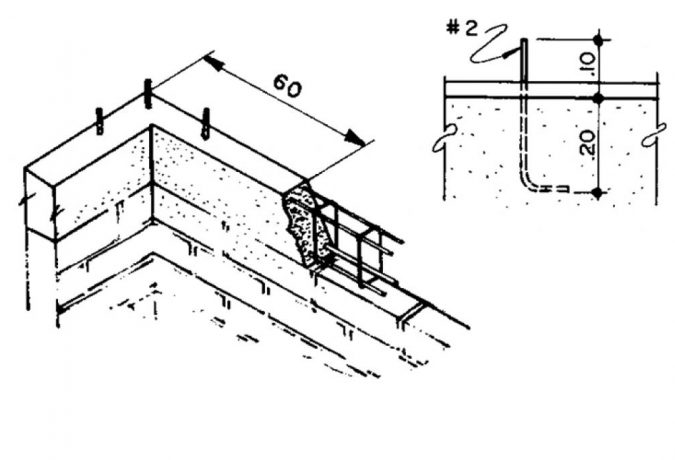 We also need to further optimize all connections between walls and beams.
We also need to further optimize all connections between walls and beams.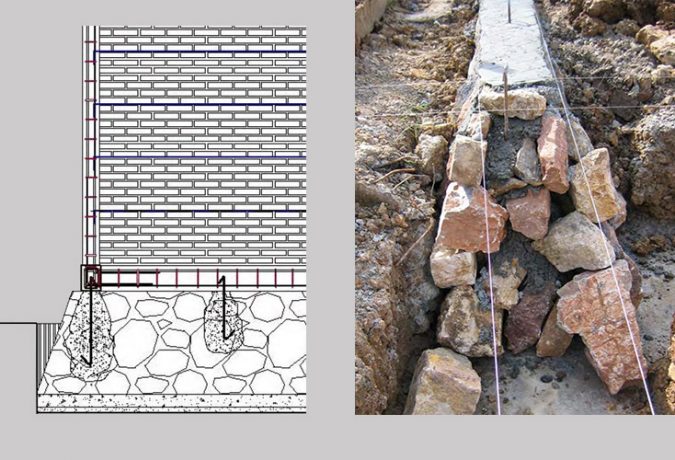 We also need to further optimize all connections between foundation and plinth beam.
We also need to further optimize all connections between foundation and plinth beam.